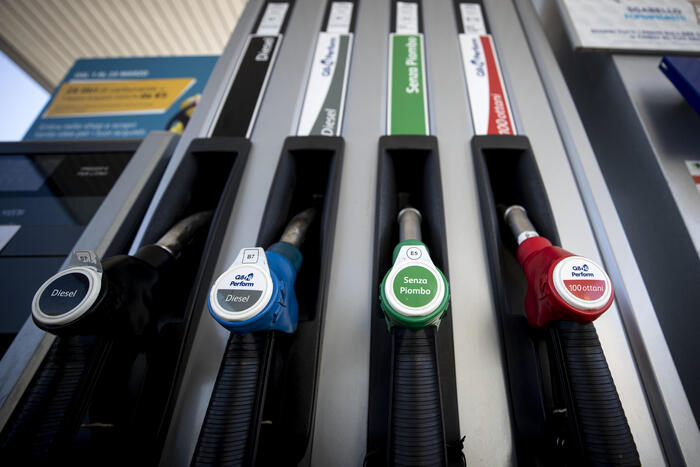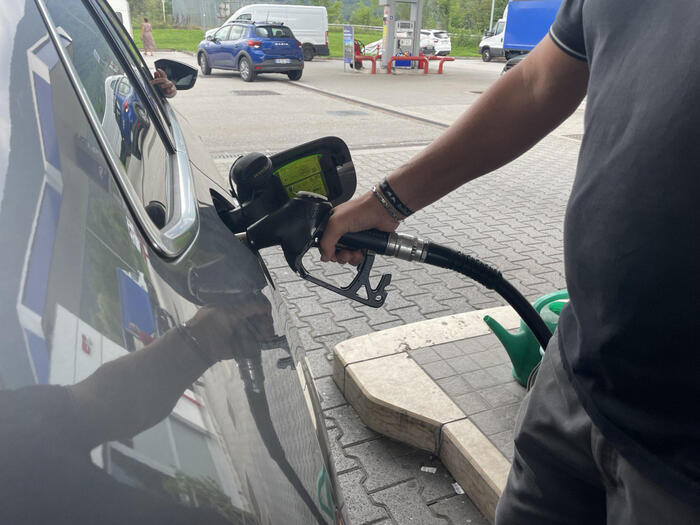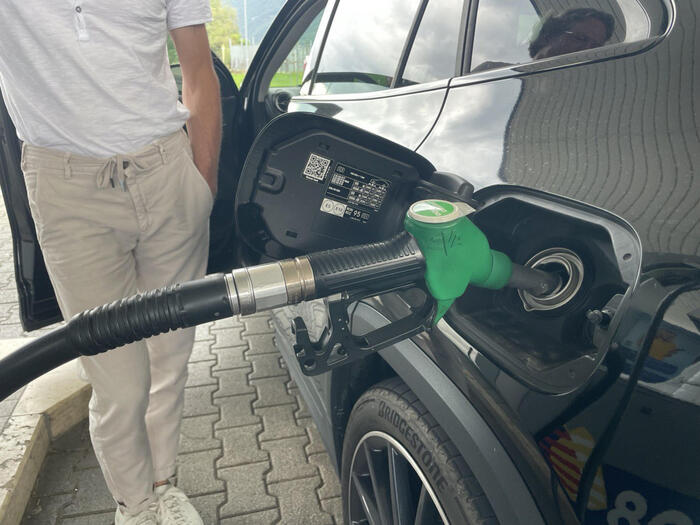Enlarge image
Freighters with spherical tanks for LNG
Photo: A9999 E.on-Ruhrgas/ dpa
At the turn of the year, the first floating LNG terminals are scheduled to go into operation. Federal Chancellor Olaf Scholz and Federal Economics Minister Robert Habeck are in Canada for three days with a business delegation to procure liquefied natural gas there, among other things.
Everyone is talking about it, but what is it?
What is LNG?
LNG is the abbreviation for »Liquefied Natural Gas«, i.e. liquefied natural gas or simply »liquefied natural gas«.
Natural gas liquefies when it is cooled to around minus 163 degrees.
What are the advantages of LNG?
In liquid form, the volume of natural gas is reduced by a factor of around six hundred.
In this form it can therefore be delivered by ship, a pipeline is no longer necessary.
Above a certain distance, which is usually given as values between 2000 and 2500 kilometers, LNG by ship is more economical than a natural gas pipeline.
What are the disadvantages?
Production, transport and reprocessing of LNG are energy-intensive and technically demanding due to the storage temperature.
The natural gas is routed in pipelines to a gas liquefaction plant.
There it is processed until it consists almost entirely of methane and then cooled down to the liquefaction temperature in several stages.
The transport takes place in special ships, where the liquefied natural gas is stored at low overpressure, to LNG terminals, where the liquefied gas is heated and compressed so that it becomes gaseous again.
It can then be fed into high-pressure networks for trading or onward transport.
All of this makes LNG significantly more expensive than conventional natural gas.
Where does the LPG come from?
The largest exporters of LPG are Australia, Qatar and the USA.
The USA and Australia in particular are planning to significantly increase their production in the coming years.
The most important LNG supplier for Europe is the United States: In 2021, 28 percent of EU LNG imports came from the USA, 20 percent each came from Qatar and Russia.
Other important suppliers are Nigeria and Algeria.
Which LNG terminals are there in Europe?
The first LPG import terminal was opened in Portugal in 2016.
Last year, 13 EU countries imported a total of 80 billion cubic meters.
According to the Brussels think tank Bruegel, imports rose sharply in the first months of 2022.
Significantly more gas came from the USA in particular.
In 2021, LNG imports accounted for 20 percent of total gas imports into the EU.
The largest importers were Spain, France, Italy, the Netherlands and Belgium.
However, large parts of south-eastern Europe to the Baltic states and, to date, Germany as well have hardly had access to these imports due to a lack of infrastructure.
Because there are still no terminals in Germany.
When will Germany get its own LNG terminals?
more on the subject
Ambitious plans:Habeck promises LNG terminals ready to go by the turn of the year
LNG imports and NPP runtimes: These are our alternatives to Putin's gas
Germany has no fixed terminals, these cost 800 million euros and would take around four years to build.
So the federal government is relying on special ships, so-called floating terminals or floating storage and regasification units (FSRU), which can take LNG from tankers and convert it into gas while still on board.
A complete port is therefore not required, but primarily only a connection from the ship to the pipeline on land.
At the turn of the year, two floating terminals rented by the federal government in Wilhelmshaven and Brunsbüttel are to go into operation.
Four large German gas importers have pledged to immediately supply these two terminals to the maximum.
According to the Federal Ministry of Economics, they have an annual capacity of 12.5 billion cubic meters.
Two more ships of this type are expected to be in service in Stade from the end of 2023 and in Lubmin from 2024.
According to the Ministry of Economic Affairs, public funds of 2.94 billion euros are earmarked for the four projects.
Floating terminals that are operated privately are also being built in Lubmin and Wilhelmshaven.
How much gas fits in a ship?
Most currently used LNG tankers have a capacity of 125,000-147,000 cubic meters, usually divided into four to six tanks.
However, larger ships with volumes of up to 250,000 cubic meters are currently being planned.
Can LNG replace gas from Russia?
That will not be possible – at least in the medium term: The planning for the terminal in Stade envisages a capacity of up to twelve billion cubic meters of gas per year.
Germany currently consumes around 100 billion cubic meters, of which around half has so far come from Russia.
Why are environmental groups criticizing the liquid gas plans?
more on the subject
US fracking vs. Nord Stream 2: Which is more harmful to the climate: pipeline or liquid gas?By Susanne Götze
Because of the complicated procedures, liquefied gas tends to have a worse carbon footprint than pipeline gas.
In addition, in the USA and Canada, natural gas is mostly extracted by fracking: water and chemicals are pressed under high pressure into deep layers of clay in order to extract the so-called shale gas.
This is associated with high energy consumption and large gas leaks.
LNG could "be as harmful to the climate as coal," said climate researcher Niklas Höhne on ZDF.
Environmental groups in Germany also criticize the construction of a new terminal infrastructure for a fossil fuel.
This contradicts the climate neutrality goal of the federal government.
It is also technically not easy to continue using the terminals for hydrogen, as has already been mentioned.
There are also objections to the planned locations of the LNG landing stations: The terminal in Wilhelmshaven could therefore endanger the local porpoise population.
Against this background, the environmentalists also criticize the approval procedures for the new projects, which have been greatly accelerated in view of the gas crisis.
mgo/AFP








